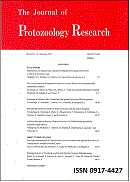Volume 8, Issue 3
Displaying 1-18 of 18 articles from this issue
- |<
- <
- 1
- >
- >|
-
1998 Volume 8 Issue 3 Pages 90-96
Published: 1998
Released on J-STAGE: March 20, 2021
Download PDF (2328K) -
1998 Volume 8 Issue 3 Pages 97-102
Published: 1998
Released on J-STAGE: March 20, 2021
Download PDF (1561K) -
1998 Volume 8 Issue 3 Pages 103-105
Published: 1998
Released on J-STAGE: March 20, 2021
Download PDF (857K) -
1998 Volume 8 Issue 3 Pages 106-119
Published: 1998
Released on J-STAGE: March 20, 2021
Download PDF (4912K) -
1998 Volume 8 Issue 3 Pages 120-125
Published: 1998
Released on J-STAGE: March 20, 2021
Download PDF (1754K) -
1998 Volume 8 Issue 3 Pages 126-130
Published: 1998
Released on J-STAGE: March 20, 2021
Download PDF (1359K) -
1998 Volume 8 Issue 3 Pages 131-138
Published: 1998
Released on J-STAGE: March 20, 2021
Download PDF (2418K) -
1998 Volume 8 Issue 3 Pages 139-143
Published: 1998
Released on J-STAGE: March 20, 2021
Download PDF (1210K) -
1998 Volume 8 Issue 3 Pages 144-152
Published: 1998
Released on J-STAGE: March 20, 2021
Download PDF (2529K) -
1998 Volume 8 Issue 3 Pages 153-161
Published: 1998
Released on J-STAGE: March 20, 2021
Download PDF (3010K) -
1998 Volume 8 Issue 3 Pages 162-170
Published: 1998
Released on J-STAGE: March 20, 2021
Download PDF (2950K) -
1998 Volume 8 Issue 3 Pages 171-176
Published: 1998
Released on J-STAGE: March 20, 2021
Download PDF (1686K) -
1998 Volume 8 Issue 3 Pages 177-181
Published: 1998
Released on J-STAGE: March 20, 2021
Download PDF (1225K) -
1998 Volume 8 Issue 3 Pages 182-184
Published: 1998
Released on J-STAGE: March 20, 2021
Download PDF (1054K) -
1998 Volume 8 Issue 3 Pages 185-189
Published: 1998
Released on J-STAGE: March 20, 2021
Download PDF (1433K) -
1998 Volume 8 Issue 3 Pages 190-193
Published: 1998
Released on J-STAGE: March 20, 2021
Download PDF (1192K) -
1998 Volume 8 Issue 3 Pages 194-200
Published: 1998
Released on J-STAGE: March 20, 2021
Download PDF (1951K) -
1998 Volume 8 Issue 3 Pages 201-203
Published: 1998
Released on J-STAGE: March 20, 2021
Download PDF (895K)
- |<
- <
- 1
- >
- >|
